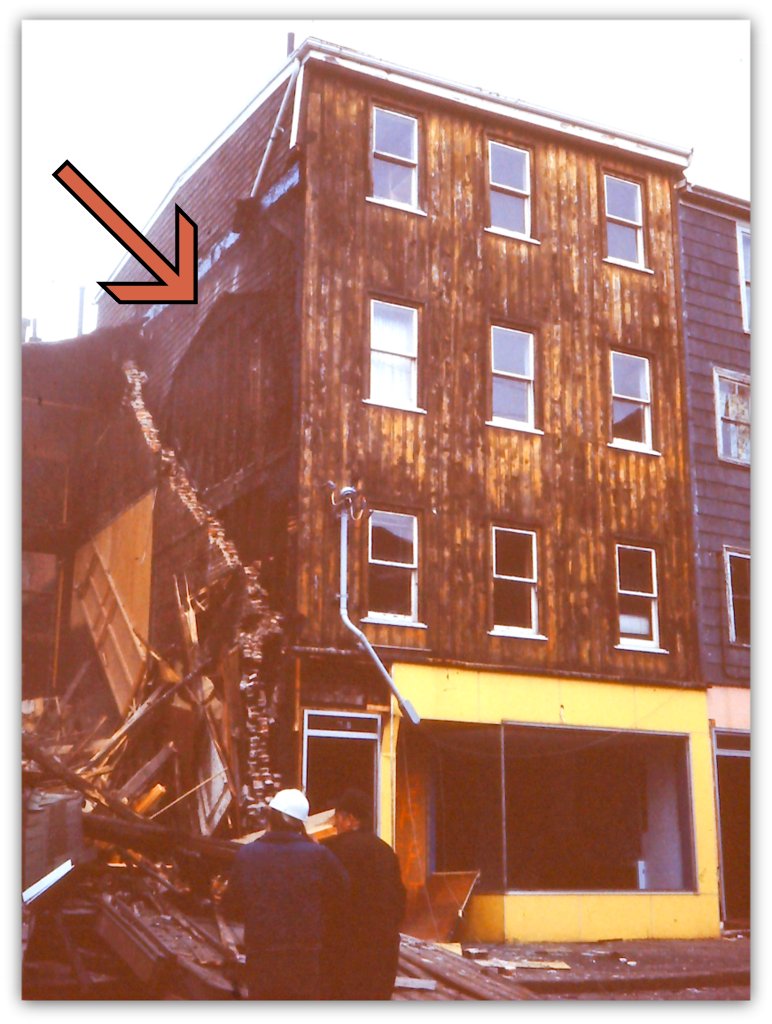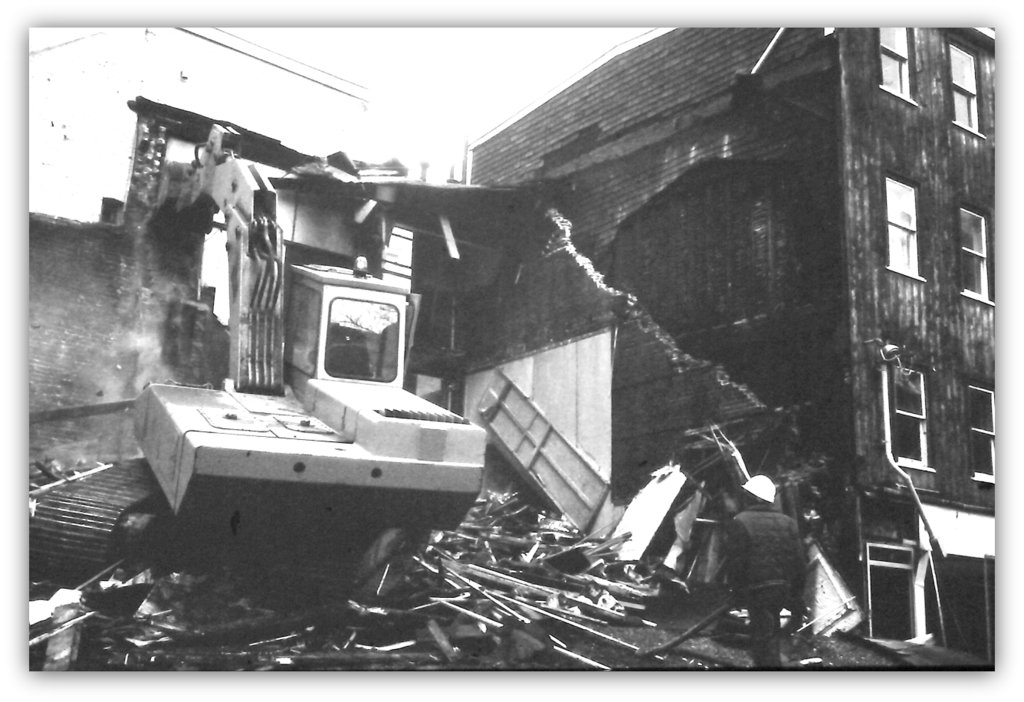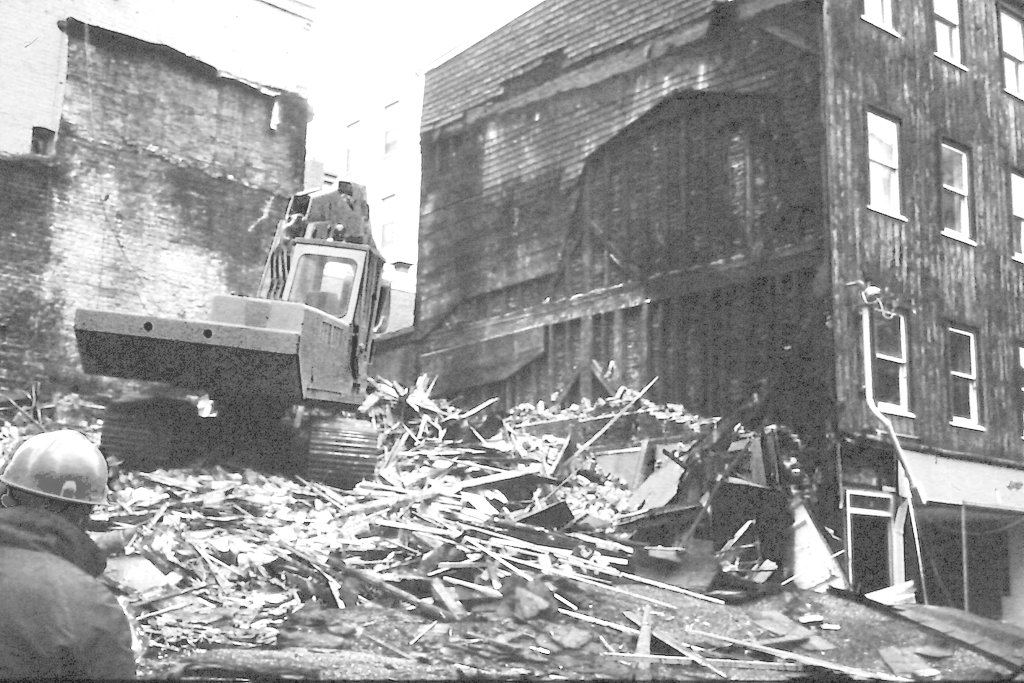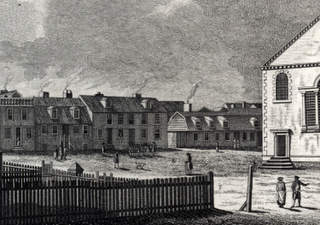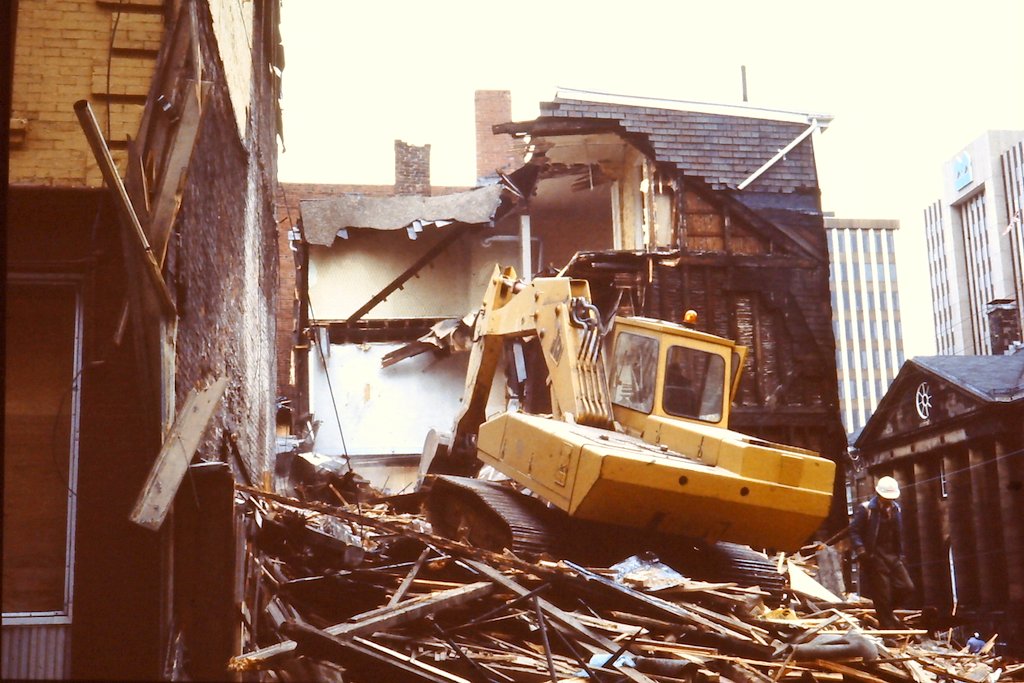In the past, I’ve been asked “what’s the most interesting thing you’ve ever noticed in Halifax?” An impossible question that sets me to mumbling about it’s not one thing but the whole la-de-doo. But in my mind I’d be thinking, it was that time I saw a real 18th century building for a moment and then it disappeared.
This story has never been told before because it is geeky, and difficult to communicate, and my photos are awful. But let me try anyway. In my last blog I talked about some buildings at the corner of Prince and Granville Streets which were demolished in 1983. I had gone downtown on a Sunday morning to take one last look and watch a big backhoe pull them down.
The building on the corner was wood but had a brick firewall separating it from the wooden structure next door. Because of several big downtown fires in the 1850s, the city outlawed new wood construction in this district after 1860 so these buildings predated that regulation. As the firewall was peeled away the silhouette of an even earlier building was exposed (follow the arrow).
When more was revealed, I realized that I was seeing the outline of a house that had previously been on the site. Nothing of it remained except the shadow captured by its neighbour.
And here is what got me so excited: a two-story building with a gambrel roof (like many barns). I could also make out that at some point a lean-to had been added to the back.
This is the construction chronology I was seeing recorded in that wall. Numbers 1 and 2 are the building I’ve been talking about.
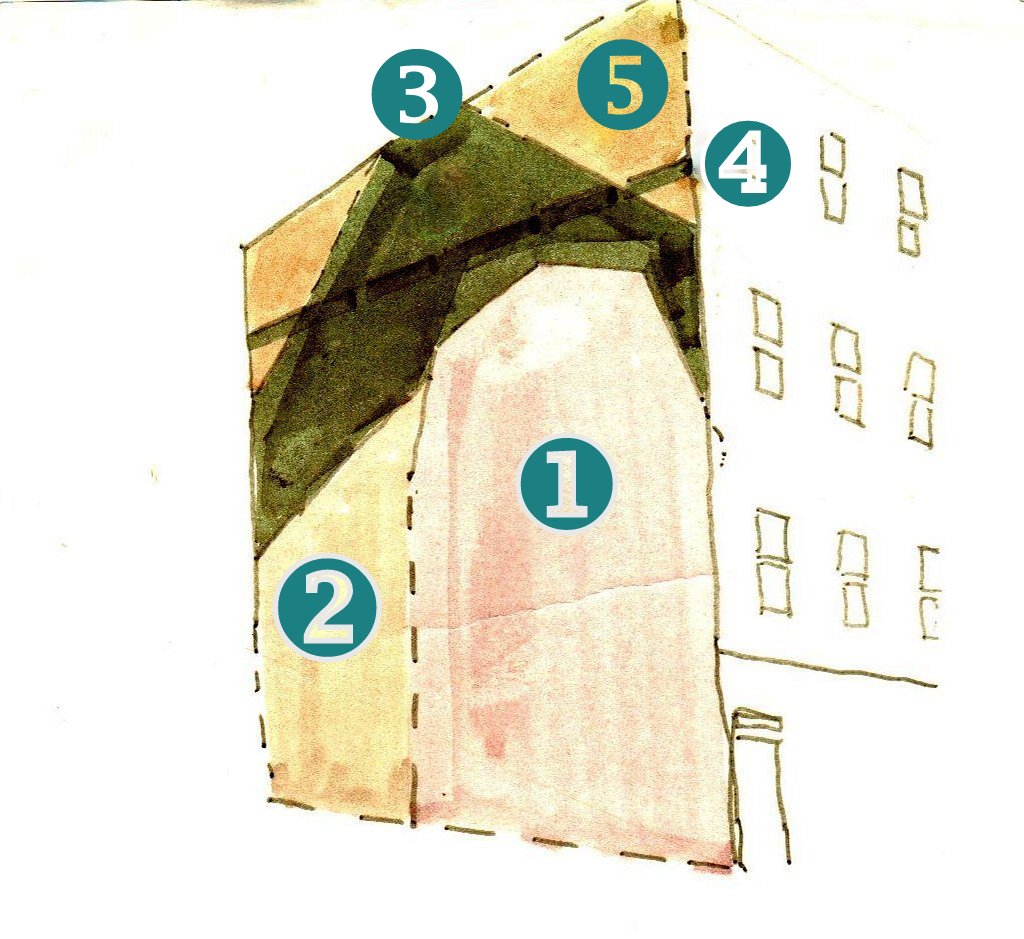 But it is common to see older building shapes revealed during demolitions, why the fuss over this one? Because folks, this is the only time I’ve seen a gambrel roof preserved and I don’t recall any buildings of this form surviving into my long lifetime. Yet the earliest illustrations of Halifax, after it’s founding in 1749, show many buildings that must have been identical to my silhouette discovery.
But it is common to see older building shapes revealed during demolitions, why the fuss over this one? Because folks, this is the only time I’ve seen a gambrel roof preserved and I don’t recall any buildings of this form surviving into my long lifetime. Yet the earliest illustrations of Halifax, after it’s founding in 1749, show many buildings that must have been identical to my silhouette discovery.
Take for example these houses on Argyle Street in 1759. The second from the left, I think, would have been identical to the house on Granville. The long building on the right is also similar but without the elevated basement.
In another view of Argyle Street from the early 19th century, the third building from the right is probably similar to our friend.
Moments after I caught that glimpse of an 18th century gambrel roof, the machine clawed it apart and moved on, leaving me with some poorly exposed slides and memories of the most interesting thing I’ve ever noticed.
Postscript
Many older Halifax houses had their rooflines altered in the 19th century, to provide more space, or sometimes to look more up to date. These alterations are often obvious when a neighbouring building is demolished. This example, further north on Granville Street, is typical.






